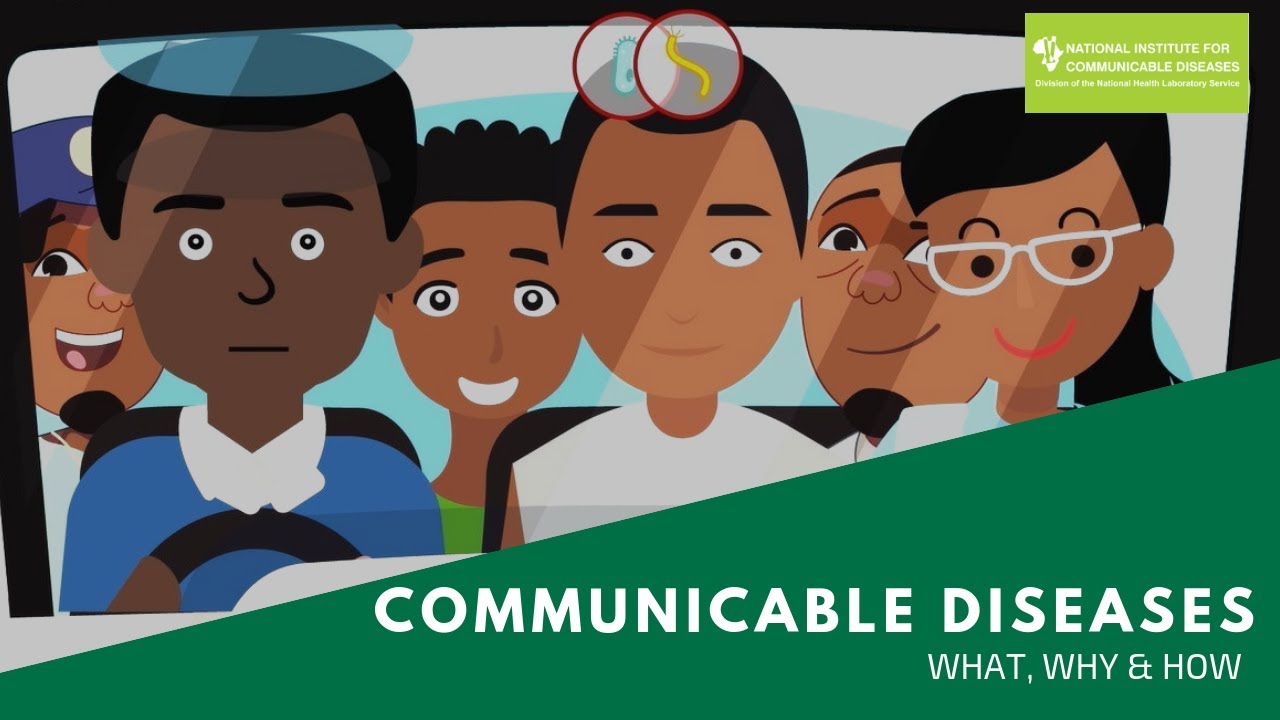Infectious Diseases Overview, Animation
Summary
TLDRInfectious diseases are caused by microorganisms like viruses, bacteria, fungi, and parasites. While most microbes are harmless or beneficial, some are pathogenic and can lead to diseases through various means, such as direct contact, contaminated food, or animal bites. The body's immune system fights infections, but pathogens can evade defenses through virulence factors. Antibiotics, antivirals, and other treatments can combat these infections. Prevention includes hygiene practices and vaccines. In severe cases, infections may lead to systemic issues like sepsis, requiring urgent medical attention.
Takeaways
- 🦠 Infections are caused by microorganisms like viruses, bacteria, fungi, or parasites, with only thousands of species being pathogenic.
- 🌿 Many microbes are part of our normal flora, helping protect us from disease-causing organisms.
- 🤝 Infectious diseases can spread through various means, including direct contact, contaminated food, or medical devices.
- 👶 Transmission can occur from mother to child during pregnancy or birth, or through contact with infected animals or their waste.
- 🌫 Pathogens can enter the body through inhalation, consumption, or contact with mucous membranes.
- 🛡 The normal flora can become harmful in individuals with weakened immune systems or when they enter sterile body parts.
- 💊 Overuse of antibiotics can disrupt the balance of protective bacteria, leading to opportunistic infections.
- 🔪 Virulence is the measure of an organism's ability to cause disease, with virulence factors aiding in tissue invasion or immune evasion.
- 🦠 Bacteria may use fimbriae, pili, or adhesins to attach to host cells, while viruses use spike proteins for entry.
- 💉 Pathogens can interfere with the immune system, impairing antibody production or inducing non-specific immune responses.
- 🛑 Some viruses can hide from the immune system by remaining dormant within host cells.
- 💊 Bacterial resistance to antibiotics allows them to evade treatment, complicating disease management.
- 🤒 Common signs of infection include fever, which is a defense mechanism, and other symptoms depending on the affected system.
- 🚑 Severe infections can lead to sepsis and septic shock, characterized by rapid heart and breathing rates, and organ damage.
- 🧪 Diagnosis relies on symptoms and lab tests to detect and identify the pathogen.
- 💊 Treatment involves the use of specific drugs like antibiotics, antivirals, antifungals, and antiparasitics.
- 🧼 Preventing disease transmission is largely achieved through personal hygiene practices, particularly hand washing.
- 💉 Vaccines are the most effective preventive measure when available, and antibiotics can be used prophylactically in some cases.
Q & A
What are infectious diseases, and what causes them?
-Infectious diseases are disorders caused by microorganisms, such as viruses, bacteria, fungi, or parasites. These organisms are known as pathogens.
How many microbial species are disease-causing?
-Out of trillions of microbial species, only several thousands are known to be disease-causing organisms, or pathogens.
What role does the normal microbial flora play in the human body?
-The normal microbial flora, which includes many species of microbes living in or on the human body, is usually harmless and can even protect the human host from invasion by pathogens.
How can infectious diseases be transmitted?
-Infectious diseases can be transmitted through direct or indirect contact with an infected person, consumption of contaminated food, contact with contaminated medical devices, from mother to child during pregnancy or birth, contact with infected animals, or bites from carriers like mosquitoes or ticks.
What are some ways pathogens enter the human body?
-Pathogens can enter the body through inhalation of contaminated droplets, consumption of contaminated food or drinks, or by entering the nose, mouth, or eyes when handling contaminated objects and touching the face.
What are virulence factors, and how do they help pathogens?
-Virulence factors are molecules or structures that enable pathogens to invade host tissues or evade the immune defense. For example, bacteria might use fimbriae or pili to bind to host cells or produce enzymes to cut across host cells.
How can pathogens interfere with the host immune system?
-Pathogens can interfere with the host immune system by impairing antibody production, producing super-antigens that induce non-specific activation of T-cells, or by remaining dormant inside host cells to hide from the immune system.
What is the difference between exotoxins and endotoxins?
-Exotoxins are toxins released by bacteria that cause damage to body systems during infection, while endotoxins are part of the outer membrane of Gram-negative bacteria and can trigger excessive inflammatory responses that can be lethal, such as in septic patients.
What are common symptoms of infections?
-The most common sign of infection is fever, which helps the body fight infection. Other symptoms vary depending on the affected system, and systemic infections can lead to sepsis and septic shock.
How can the transmission of infectious diseases be minimized?
-Transmission can be minimized through personal hygiene practices like hand washing, and by using vaccines when available. In some cases, antibiotics may be given for prophylactic purposes.
Outlines

Dieser Bereich ist nur für Premium-Benutzer verfügbar. Bitte führen Sie ein Upgrade durch, um auf diesen Abschnitt zuzugreifen.
Upgrade durchführenMindmap

Dieser Bereich ist nur für Premium-Benutzer verfügbar. Bitte führen Sie ein Upgrade durch, um auf diesen Abschnitt zuzugreifen.
Upgrade durchführenKeywords

Dieser Bereich ist nur für Premium-Benutzer verfügbar. Bitte führen Sie ein Upgrade durch, um auf diesen Abschnitt zuzugreifen.
Upgrade durchführenHighlights

Dieser Bereich ist nur für Premium-Benutzer verfügbar. Bitte führen Sie ein Upgrade durch, um auf diesen Abschnitt zuzugreifen.
Upgrade durchführenTranscripts

Dieser Bereich ist nur für Premium-Benutzer verfügbar. Bitte führen Sie ein Upgrade durch, um auf diesen Abschnitt zuzugreifen.
Upgrade durchführenWeitere ähnliche Videos ansehen

COMMUNICABLE DISEASES | What? Why? How?

Infectious Diseases: A Beginner's Guide to the Basics

Microorganismos - Recopilação - Vírus, bactérias e fungos - Explicação para crianças

PJOK KELAS 5 SEMESTER 2 - PENYAKIT MENULAR

What are microorganisms? Bacteria, Viruses and Fungi

Peligros Biológicos: Hongos, bacterias y parásitos
5.0 / 5 (0 votes)
